Key Takeaways
1. Abstraction Unifies Diverse Mathematical Concepts
By putting the main focus on the process of (mathematical) abstraction, Eugenia Cheng supplies the reader (whatever their ‘brain-type’) with the mental tools to make that distinction precise and potentially useful.
Abstraction's Power. Abstraction is the process of carefully selecting which details to ignore in order to reveal underlying connections and patterns. It allows mathematicians to unify seemingly disparate concepts by focusing on shared structures, making arguments unambiguous and applicable across various situations. This process is not about moving away from reality, but rather about gaining a deeper understanding of particular aspects of the concrete world.
Abstraction in Action. Consider the concept of "two." Whether it's two apples, two bananas, or two chairs, the underlying numerical concept remains the same. Abstraction allows us to move beyond the specific details of each situation and focus on the shared property of "twoness." This unification enables us to apply the same mathematical principles to a wide range of objects and scenarios.
Category Theory's Role. Category theory provides a framework for performing abstractions in a secure and well-defined manner. It offers tools for identifying and formalizing the essential structures that connect different mathematical objects, allowing for a more efficient and insightful approach to problem-solving and theory-building. This framework helps to avoid ambiguity and ensures that abstractions are both rigorous and meaningful.
2. Context Determines Mathematical Meaning
One of the starting points of category theory is the idea that we should always study things in context rather than in isolation.
Contextual Truth. Mathematical objects and concepts do not exist in a vacuum; their properties and behaviors are heavily influenced by the context in which they are studied. What is true in one mathematical world may not be true in another, emphasizing the importance of specifying the context when making mathematical statements. This is a departure from the traditional view of mathematics as a collection of absolute truths.
Examples of Contextual Math:
- In standard arithmetic, 1 + 1 = 2. However, in modular arithmetic (e.g., a 12-hour clock), 11 + 2 = 1.
- The concept of "circle" changes dramatically when considering taxi-cab geometry versus Euclidean geometry.
- The properties of numbers, such as primality, depend on the number system being considered (e.g., whole numbers vs. fractions).
Category Theory's Approach. Category theory emphasizes the importance of understanding the context in which mathematical objects are studied. By explicitly defining the relationships and structures within a given context, category theory provides a framework for navigating the fluidity of mathematical meaning and avoiding ambiguity. This contextual awareness is crucial for making meaningful connections between different areas of mathematics.
3. Relationships Define Mathematical Structures
It takes the view that what is important in a given context is the ways in which things are related to one another, not their intrinsic characteristics.
Relationships over Properties. Category theory prioritizes the relationships between objects over their inherent properties. The way objects interact and connect within a system is more crucial than their individual attributes. This perspective allows for a more flexible and adaptable approach to mathematical thinking.
Family Relationships Analogy:
- In a family tree, the relationships (parent-child, sibling) are more important than individual characteristics like age or height.
- Different types of relationships (age, family, wealth) define different contexts for studying the same set of people.
Mathematical Relationships. Numbers can be related by size (ordering on a number line) or divisibility (factor lattices). Category theory provides a framework for studying these different types of relationships and understanding how they shape the properties of numbers. The choice of relationship determines the context.
4. Category Theory Nuances the Idea of Sameness
Category theory seeks to study notions of sameness that are more subtle and complex than direct equality, but still unambiguous enough to be discussed in rigorous logical arguments.
Beyond Equality. Traditional mathematics often relies on the concept of equality, but category theory introduces more nuanced ways of expressing sameness. This is particularly important when dealing with complex mathematical objects where direct equality is too restrictive.
Isomorphism as a Key Concept:
- Isomorphism captures the idea of "sameness in structure," where two objects may be different in their specific details but have the same underlying form.
- Isomorphic objects can be treated as interchangeable within a given context, allowing for more flexible and powerful reasoning.
Examples of Nuanced Sameness:
- The equation 5 + 1 = 1 + 5 highlights a sameness in outcome, not a complete identity of the two expressions.
- Different interpretations of "equality" for people (e.g., equal treatment, equal opportunity) demonstrate the complexity of the concept.
Category theory provides a framework for exploring these subtle notions of sameness, allowing for more precise and insightful analysis of complex mathematical structures.
5. Patterns Reveal Underlying Abstract Structures
Mathematics as pattern spotting.
Patterns as Bridges. Patterns serve as bridges between different situations, revealing underlying connections and structures. Spotting patterns is a crucial step in mathematical thinking, allowing for efficient understanding and generalization. Patterns can be visual, numerical, or conceptual, and they often point to deeper mathematical truths.
Patterns in Number Systems:
- Multiples of 10 always end in 0 (in base 10).
- Multiples of 5 end in 5 or 0.
- Addition tables exhibit diagonal stripes.
Patterns as Analogies. Patterns can be viewed as analogies between different situations. The repeating patterns of final digits on multiples of numbers are analogies between multiples. The "shifting diagonal" pattern in addition tables for different numbers of hours is an analogy between different patterns.
By recognizing and formalizing patterns, we can uncover the abstract structures that govern diverse mathematical phenomena. This process of abstraction allows us to study these structures in a more general and powerful way.
6. Formalism Provides Rigor and Clarity
The framework of mathematics involves the twin disciplines of logic and abstraction.
Formalism's Purpose. Formalism in mathematics provides a precise language and notation for expressing abstract ideas and building rigorous arguments. It eliminates ambiguity and ensures that mathematical statements are unambiguous and logically sound. While formalism can be offputting to newcomers, it is essential for advancing mathematical knowledge.
Benefits of Formalism:
- Efficiency: Concise notation allows for quicker expression and manipulation of complex ideas.
- Abstraction: Formalism facilitates the packaging of multiple concepts into succinct units, enabling more complex reasoning.
- Rigor: Formalism provides a framework for building arguments based on rigorous logic, ensuring the validity of mathematical conclusions.
Example: Metric Spaces. The formal definition of a metric space provides a framework for studying different types of distance, including Euclidean distance and taxi-cab distance. By specifying the properties that a distance function must satisfy, formalism allows us to explore and compare different notions of distance in a rigorous and unambiguous way.
7. Duality Offers a Powerful Perspective Shift
Turning arrows around.
Duality's Essence. Duality is a fundamental concept in category theory that involves reversing the direction of all arrows in a category. This seemingly simple operation can lead to profound insights and new perspectives on mathematical structures. By considering the dual of a concept, we can often uncover hidden symmetries and relationships.
Benefits of Duality:
- Provides a new lens for viewing mathematical objects and theorems.
- Uncovers hidden symmetries and relationships.
- Allows for the transfer of knowledge and techniques between seemingly disparate areas of mathematics.
Examples of Duality:
- Initial and terminal objects are dual concepts.
- Products and coproducts are dual concepts.
- Monic and epic morphisms are dual concepts.
By embracing duality, we can gain a more complete and nuanced understanding of mathematical structures and their interconnections.
8. Universal Properties Characterize Objects by Role
Category theory seeks to characterize things by the role they play in context rather than by some intrinsic characteristics.
Role vs. Intrinsic Properties. Category theory emphasizes characterizing objects by the role they play within a given context, rather than by their intrinsic properties. This approach allows for a more flexible and adaptable way of thinking about mathematical structures.
Universal Properties as Extremities:
- Universal properties often involve identifying "extreme" objects within a category, such as initial and terminal objects.
- These extreme objects are characterized by their unique relationships with all other objects in the category.
Examples of Universal Properties:
- The number 0 is the unique number that acts as the additive identity.
- The product of two sets is the unique set that satisfies a certain mapping property.
By focusing on the role that objects play in relation to others, universal properties provide a powerful tool for understanding and comparing different mathematical structures.
9. Functors Connect Different Mathematical Worlds
Category theory is a unifying theory that can simultaneously encompass a broad range of topics and also a broad range of scales by zooming in and out.
Functors as Bridges. Functors are morphisms between categories, providing a way to translate structures and relationships from one mathematical world to another. They act as bridges, allowing us to transfer insights and techniques between different areas of mathematics.
Free and Forgetful Functors:
- Forgetful functors strip away structure, mapping structured objects (e.g., groups) to their underlying sets.
- Free functors add structure, mapping unstructured objects (e.g., sets) to structured objects (e.g., free monoids).
Preserving and Reflecting Structure:
- Functors can preserve structure, meaning that they map certain properties from one category to another.
- Functors can also reflect structure, meaning that if a property holds in the target category, it must also hold in the source category.
By studying functors and their properties, we can gain a deeper understanding of the relationships between different mathematical worlds and the ways in which they are interconnected.
10. Higher Dimensions Add Subtlety and Nuance
Higher-dimensional category theory trains us in balancing nuance with rigor so that we don’t need to resort to black-and-white, and so that we don’t want to either.
Beyond Categories. Higher-dimensional category theory extends the concepts of category theory to higher levels of abstraction. This involves considering relationships between morphisms, relationships between relationships, and so on, creating a multi-layered framework for mathematical thinking.
Benefits of Higher Dimensions:
- Increased subtlety and nuance in mathematical expression.
- A more flexible and adaptable approach to problem-solving.
- The ability to study mathematical structures at multiple scales simultaneously.
Examples of Higher-Dimensional Concepts:
- 2-categories: Categories with objects, morphisms, and 2-morphisms (morphisms between morphisms).
- Monoidal categories: Categories with a binary operation that is associative up to isomorphism.
- Infinity categories: Categories with morphisms at every dimension.
By embracing higher dimensions, we can move beyond the limitations of traditional mathematical thinking and explore a richer, more interconnected world of abstract structures.
Last updated:
Review Summary
The Joy of Abstraction receives mixed reviews. Many praise its accessible introduction to category theory and mathematical thinking for non-mathematicians. Readers appreciate Cheng's enthusiasm and use of real-world examples. However, some find the book's difficulty level inconsistent, with the second half becoming too technical. Several reviewers criticize the author's inclusion of political and social commentary, feeling it distracts from the mathematical content. Despite these concerns, many still recommend it as an engaging exploration of abstract mathematics, particularly for those interested in category theory.
Similar Books

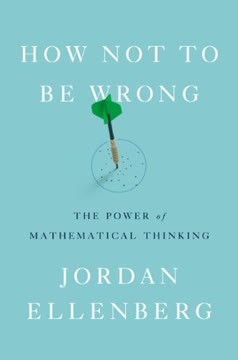

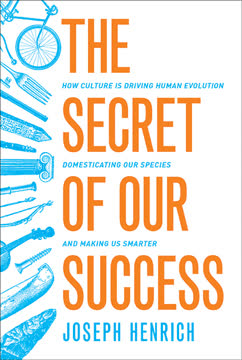

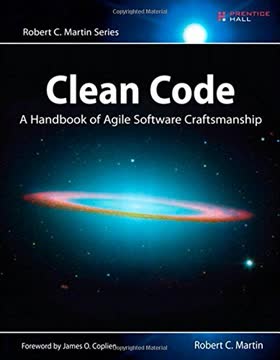
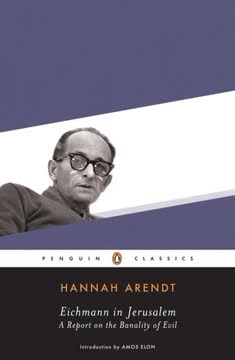

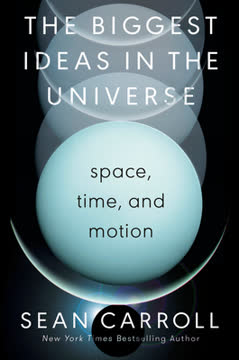

Download PDF
Download EPUB
.epub digital book format is ideal for reading ebooks on phones, tablets, and e-readers.







